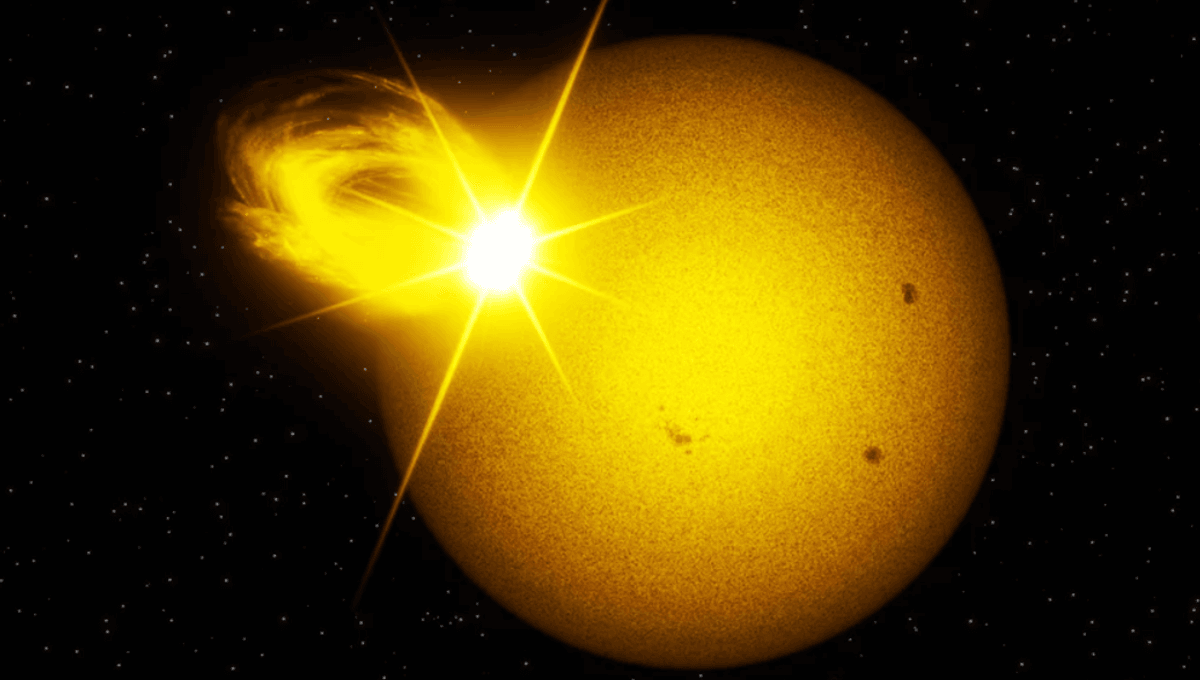
Gigantic superflares burst out of Sun-like stars roughly once every 100 years, releasing as much energy as a trillion hydrogen bombs exploding. Could this mean our star, the Sun, is long overdue for an outburst?
Scientists at the Max Planck Institute for Solar System Research (MPS) in Germany used data from NASA’s Kepler space telescope to look at the flickering brightness of 56,450 Sun-like stars.
These fluctuations in brightness are a likely indication that the star was experiencing an intense solar flare, a burst of radiation and energy emitted from the Sun’s surface caused by the sudden release of magnetic energy stored in its atmosphere.
Their study revealed that extremely powerful solar flares, called superflares, occurred 10 to 100 times more frequently than previously assumed. The researchers identified 2,889 superflares in 2,527 of the 56,450 observed stars, meaning that a superflare is produced by a Sun-like star, on average, around once every century.
“We were very surprised that Sun-like stars are prone to such frequent superflares,” Dr Valeriy Vasilyev, first study author from the MPS, said in a statement.
So what about our Sun? The stars analyzed in the study have a surface temperature and brightness similar to the Sun’s, suggesting they behave in a similar way.
“We cannot observe the Sun over thousands of years. Instead, however, we can monitor the behavior of thousands of stars very similar to the Sun over short periods of time. This helps us to estimate how frequently superflares occur,” Professor Dr Sami Solanki, study co-author and Director at the MPS.
Bouts of heightened solar activity constantly rock our planet, but the Sun has not emitted a major superflare in the past century. If it did, it would be impossible to ignore: power grids would fail, radio communication would be severely disrupted, and satellites damaged, leading to interruptions in navigation systems like GPS.
In 1859, the world endured the most intense geomagnetic storm in recorded history, known as the Carrington Event. Telegraph communication systems literally burst into flames, while the Northern Lights were observed as far south as Cuba and Hawai’i, reportedly allowing people to read newspapers by the light of the aurora alone.
However, even this event was caused by a solar flare that was just one-hundredth of the energy of a superflare. If this new study is anything to go by, it’s possible – albeit not certain – that the Sun could be gearing up for an even bigger solar tantrum.
“The new data are a stark reminder that even the most extreme solar events are part of the Sun’s natural repertoire,” added coauthor Dr Natalie Krivova from the MPS.
The study is published in the journal Science.
Source Link: Every 100 Years, Stars Like Our Sun Eject Superflares More Powerful Than A Trillion Nukes